
Spaces and stories
People, ideas and eras meet in Paasitorni. The building and its diverse spaces and environments are full of stories from more than a hundred years. Learn more – and then make your own story.
The nearly 30 meeting and event facilities in Paasitorni are named after different themes. Some of them are named after a person, some are named after local places, and some have a theme related to Paasitorni, its location or history.
All the stories now in one volume.
Download the Paasitorni Spaces and Stories booklet here.
You can also find more information about Paasitorni’s history and the stories related to it here.
Meeting and event facilities
Anita
Paasitorni’s new splendour
Anita
Paasitorni’s new splendour
Paasitorni’s floor 3.5 has two nearly identical rooms. They are dedicated to the people we can thank for Paasitorni being the establishment it is today.
Anita Ritakallio served as Paasitorni’s congress manager on two occasions, from 1987 to 1990, and from 1995 to 2016. Ritakallio was a determined reformer with a strong vision of restoring Paasitorni to its splendour after several decades of reduced activity.
Ritakallio’s uncompromising nature is evident in how she resigned from her position when she felt the progress towards her vision was too slow. Fortunately, she returned to Paasitorni after five years.
Esko Häsä, on the other hand, served as Paasitorni’s managing director from 1993 to 2001. He was responsible for ensuring that the significant development and reform projects of the building and its services would be completed.
Since the mid-1990s, Paasitorni has undergone a nearly total transformation from the slightly worn-down Workers’ House to a modern and versatile conference and event venue.

Pictured: Anita Ritakallio (Helsinki Workers’ Association)
Brahenkenttä
How does it feel to sit in the stands in 20 degrees below zero?
Brahenkenttä
How does it feel to sit in the stands in 20 degrees below zero?
Ice hockey is the leading team sport in Finland, but originally bandy was the absolute number one winter team sport in the country.
The first bandy match was played in Helsinki in 1908. Ice hockey was first played in the 1920s, and it was not until the late 1960s that it overtook bandy as the number one winter sport.
Over the decades, sport has become increasingly a form of entertainment, and efforts have been made to make it as enjoyable as possible to watch. Instead of outdoor stands in freezing temperatures, ice hockey spectators now enjoy warm ice hockey arenas with restaurants.
But bandy has maintained a loyal fanbase. In Helsinki, the main stage for bandy is now Brahenkenttä, or ”Braku”, where the capital’s teams play their home games.
Of course, the general public can also go ice skating on Braku, and you don’t even need your own skates, as they are available for rent at the ice rink.
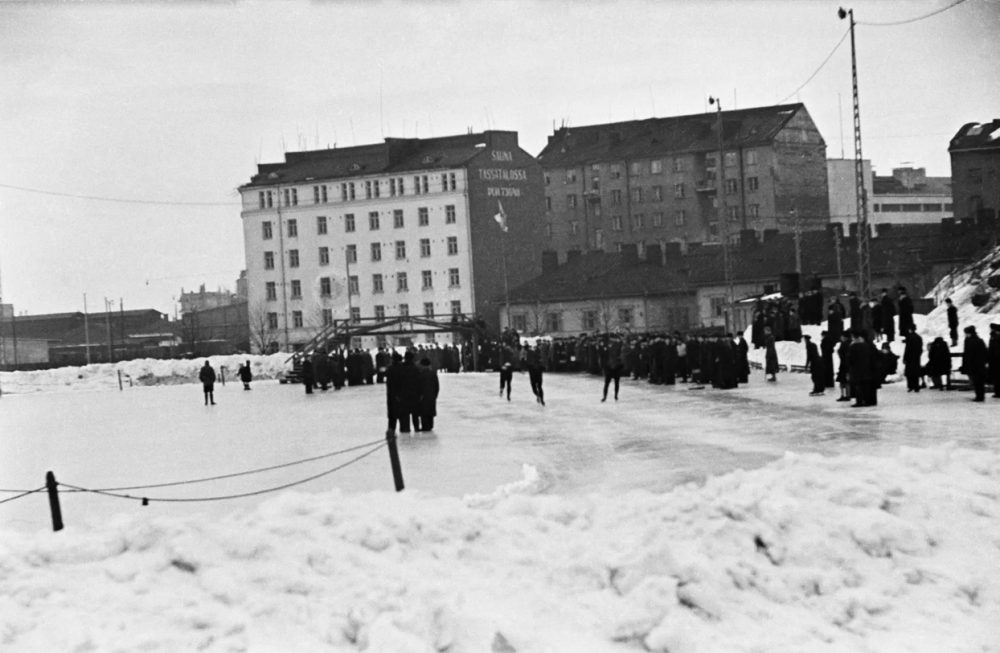
Pictured: Brahenkenttä in the 1940s (Väinö Kannisto, Helsinki City Museum)
Congress Hall
The Sex Pistols never played here
Congress Hall
The Sex Pistols never played here
The Paasitorni Congress Hall has been the scene of thousands of events over the years. The venue has been the stage for meetings, dances, boxing matches, and presidential election victory celebrations – and all kinds of music.
It has been the stage of many firsts in Finland, whether genuine jazz performed by African-American musicians or real rock and roll.
However, one band proved too elusive to ever feature on its stage, despite best efforts.
The Sex Pistols, the most legendary punk band of all time, were due to play a sold-out gig at Paasitorni in January 1978, but the authorities banned the event, as it was deemed to offer ”violence and anarchy as a fashion statement”.
The band’s vocalist John Lydon (Johnny Rotten) might find it amusing to know that nowadays, this hall hosts an annual Easter punk event – without any prior censorship.

Pictured: Sex Pistols (Koen Suyk, National Archives, the Hague)
Esko
Paasitorni’s new splendour
Esko
Paasitorni’s new splendour
Paasitorni’s 3.5 floor has two nearly identical rooms: Anita and Esko. They are dedicated to the people we can thank for Paasitorni being the establishment it is today.
Esko Häsä was Paasitorni’s managing director from 1993 to 2001, and under his leadership the extensive renovation and modernisation of the building’s facilities and services began.
Häsä’s vision was to develop Paasitorni while honouring the work of architect Karl Lindahl. It would become one of the building’s key selling points and also resulted in new award-winning high-quality architecture for Siltasaari.
Since the mid-1990s, Paasitorni has undergone a real transformation from the Workers’ House that had seen better days with its traditional restaurant and property services to a modern and architecturally rich meeting and event venue.

Pictured: Esko Häsä (Helsinki Workers’ Association)
Hakaniementori
An authentic market place
Hakaniementori
An authentic market place
Tourists arriving in Helsinki usually head to Market Square at the end of Esplanade in the city centre. But many already know that the most authentic market can be found in Hakaniemi, right next to Paasitorni.
Initially, Hakaniementori was covered by water, and Siltasaari, where Paasitorni is located, was an island. The market was built on infill land in the late 19th century, and all kinds of trading quickly took off.
Since the beginning, traders in Hakaniementori have sold all kinds of produce, from berries to game. Soon, cloth merchants and tailors followed suit. During the Second World War, Hakaniementori was taken over by huge log piles.
Hakaniementori is perhaps at its best on Midsummer’s Eve – if you happen to be in the capital during Midsummer, you could do worse than to drink coffee and buy your fresh vihta for the sauna while listening to accordion music.

Pictured: Hakaniementori in the 1940s (Aarne Pietinen, Finnish Heritage Agency)
Huippu
Red lantern and white flag
Huippu
Red lantern and white flag
On 26 January 1918, a red lantern was lit at the top of Paasitorni to mark the beginning of the Civil War. In the spring of that same year, a white flag was hoisted atop the Kallio Church spire, signalling surrender.
The Civil War was undoubtedly the most tragic period in the history of Paasitorni, when it was taken over by the revolutionary Red Guard despite the opposition of the Workers’ Association.
The Red Guard would meet a total defeat, and the war also took its toll on Paasitorni: the tower eventually caught fire, the ballroom collapsed and the entire building suffered extensive damage.
Today – more than a hundred years later – Paasitorni is in better shape than ever, affording stunning views over the whole of Helsinki.
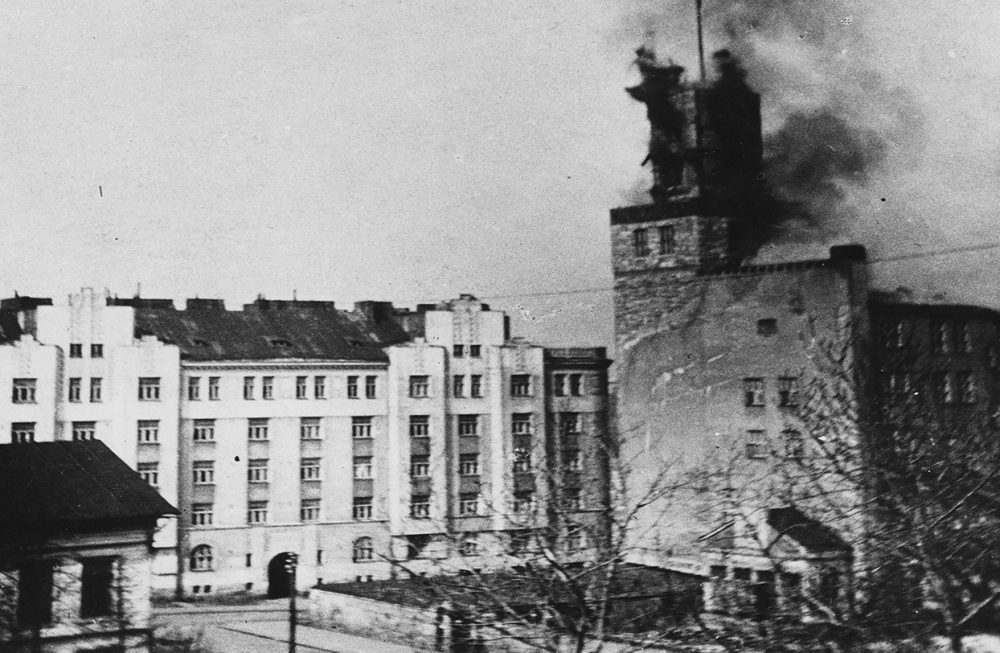
Pictured: The Paasitorni tower on fire (The Labour Archives)
Johtokunta
The pounding of the gavel
Johtokunta
The pounding of the gavel
Paasitorni was built by the Helsinki Workers’ Association, which was founded in 1884 and whose first chairman was Viktor Julius von Wright.
Over the years, the board of the association has been involved in many decisions, one of the most important ones being the decision to build this house.
The search for a suitable location was long and arduous. Initially, the house was planned for Kansakoulunkatu, but the plot proved too small.
Finally in 1905, the then chairman Emil Perttilä’s gavel pounded on the table to signal the decision to build the house in Siltasaari.
The next step was to decide what kind of building would best serve the purpose. A design competition was organised, and Karl Lindahl’s proposal won.
Paasitorni was finally erected in Siltasaari in 1908 and has since served as a meeting place for thousands of events and gatherings.

Juho Rissanen
Homeless citizen of the world
Juho Rissanen
Homeless citizen of the world
When you look around in this room, you can see three works of art signed by Juho Rissanen.
Rissanen was a significant force in the golden age of Finnish art who lived an exceptionally eventful life. He was born in Kuopio in 1873 to a poor family, became an apprentice at a painter’s shop at the age of 15, and then a student of the Artists’ Association of Finland’s art school in 1896, receiving an education in the arts by people such as Helene Schjerfbeck.
Rissanen, who knew no other languages, then moved to Saint Petersburg to join the Saint Petersburg Academy of Arts under the tutelage of Ilya Repin. In 1918, he moved to Denmark, then to France, and finally in 1939 to Miami in the United States.
Rissanen thought of himself as a citizen of the world, and never had a particular home. The greatest trauma of his life came from his drunken father freezing to death when Rissanen was ten years old.
Juho Rissanen donated the paintings “Rakentajia” (“Builders”) and “Lastin purkaminen” (“Unloading cargo”) to the Helsinki Workers’ Association in 1915. The charcoal drawing titled “Tappelu” (“Fight”) was donated by Counsellor of Social Welfare Aira Heinänen in 2017.

Pictured: Juho Rissanen (Finnish Heritage Agency)
Kallio foyer
Welcome to the city district of Kallio!
Kallio foyer
Welcome to the city district of Kallio!
Paasitorni (in our opinion at least) is in the city’s best location, in Siltasaari, between the city centre and the Kallio district. And now that you’re here – very near Kallio – it’s worth using this opportunity to explore the best that the eastern inner city has to offer.
Kallio originally emerged as a working-class district. Small one-room apartments would be occupied by whole families. However, in the 1960s, these families moved to the new suburbs that were erected on the outskirts of the city. They were replaced by students, young adults and artists.
Today, Kallio remains an area in constant flux and evolution – largely because most people only live there for a few years before moving on.
Kallio is known for its numerous restaurants, bars, cafes, interesting boutiques and culture. In recent years, the inhabitants of Kallio have also become wealthier, and it can be seen and felt – mostly positively.
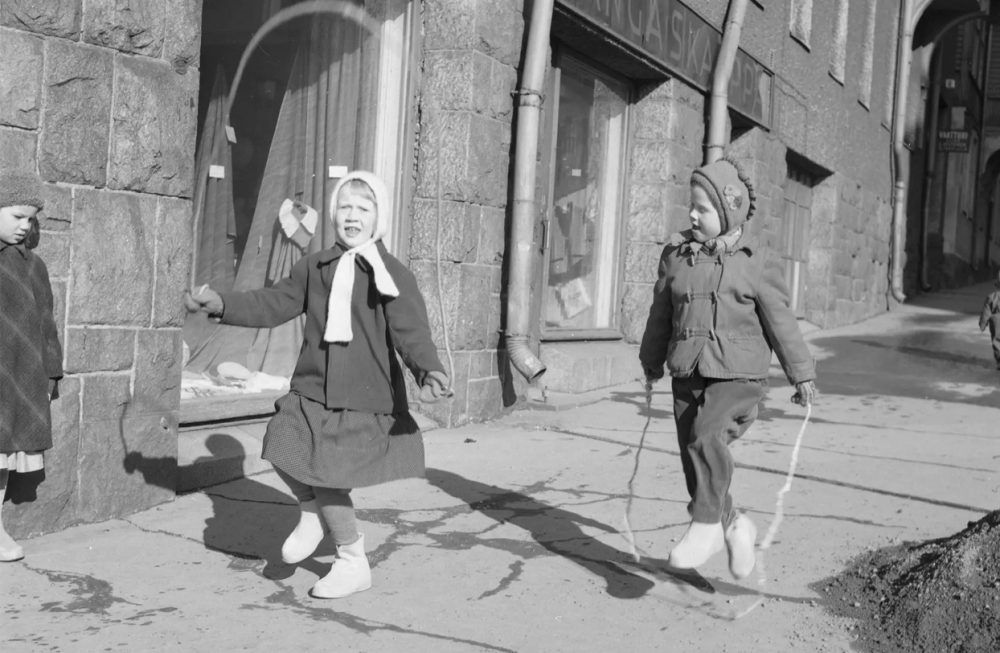
Pictured: Fleminginkatu 2 in 1961 (Teuvo Kanerva, Finnish Heritage Agency)
Karhupuisto
Hanging out in the heart of Kallio
Karhupuisto
Hanging out in the heart of Kallio
Right in the centre of Kallio you will find Karhupuisto, ”Bear Park”. It is flanked by Kallio Library, a fire station and several good restaurants. But how did Bear Park get its name?
The answer is pretty easy: Bear Park features a sculpture of a bear by sculptor Jussi Mäntynen.
Originally called Agricola Park, the park was often confused with the park next to Agricola church in another district, Eira, so it came to be renamed after the iconic statue standing in the middle of it.
Bear Park is a good place to explore the Kallio way of life in all its diversity. People play petanque, run flea markets, organize events and just while away their time.
If the weather allows, and you have the chance, it is well worth a visit. And if you have headphones with you, we suggest you listen to the Kallio-themed songs of the popular Finnish band Sir Elwoodin Hiljaiset Värit as the soundtrack of your tour.

Pictured: Karhupuisto in the 1960s (Teuvo Pietinen, Finnish Heritage Agency
Karl Lindahl
From Jugendstil to classicism
Karl Lindahl
From Jugendstil to classicism
The Swedish-born architect Karl Lindahl never learned to speak Finnish, but he completed a commendable career here as an architect. One of his most renowned works is this building: Paasitorni.
A design contest for Paasitorni was organised in 1905, and Lindahl won. The construction was completed to much celebration in the autumn of 1908 – five days of celebration, in fact.
Later, in the 1920s, Lindahl also designed the extension to Paasitorni.
In the early parts of Lindahl’s career, the prevailing architectural ideal was the ornamental Jugendstil, which gradually gave way to the more simplistic Nordic classicism.
Paasitorni is a splendid encapsulation of this transition: the oldest part of the building is a pure exemplar of Jugendstil, while the section constructed in the 1920s represents classicism.
The beautiful renovated interior of this meeting space was designed to pay homage to Lindahl’s architectural values and life’s work.
The meeting space’s massive 13-metre-long fresco was painted by Hungarian artist Janos Rozs in return for food while he was in Finland as a refugee in 1939.

Pictured: Karl Lindahl (Finnish Heritage Agency)
Karuselli
A strongwoman who tossed men in the air
Karuselli
A strongwoman who tossed men in the air
One of the stars of the circus that operated on the site of Paasitorni in Siltasaari at the turn of the 1900s was the ”Strongwoman of Urjala”, whose real name was Anna Anthonius.
She was known for her clever publicity stunt: she challenged the era’s renowned strongman Charles Jackson in his show – and beat him.
Anthonius was 175 centimetres tall and weighed 116 kilograms. She had acquired her strength as a child through hard farm work.
The Strongwoman of Urjala’s performance consisted of wrestling and various displays of strength. Her signature skill was to lift large men up in the air with no effort.
In her wildest stunt, two men were hung from the ends of a heavy iron bar. Anthonius pushed them up and then asked three other men to hang from the bar.
Finally, she would spin the men around in the air on the bar.
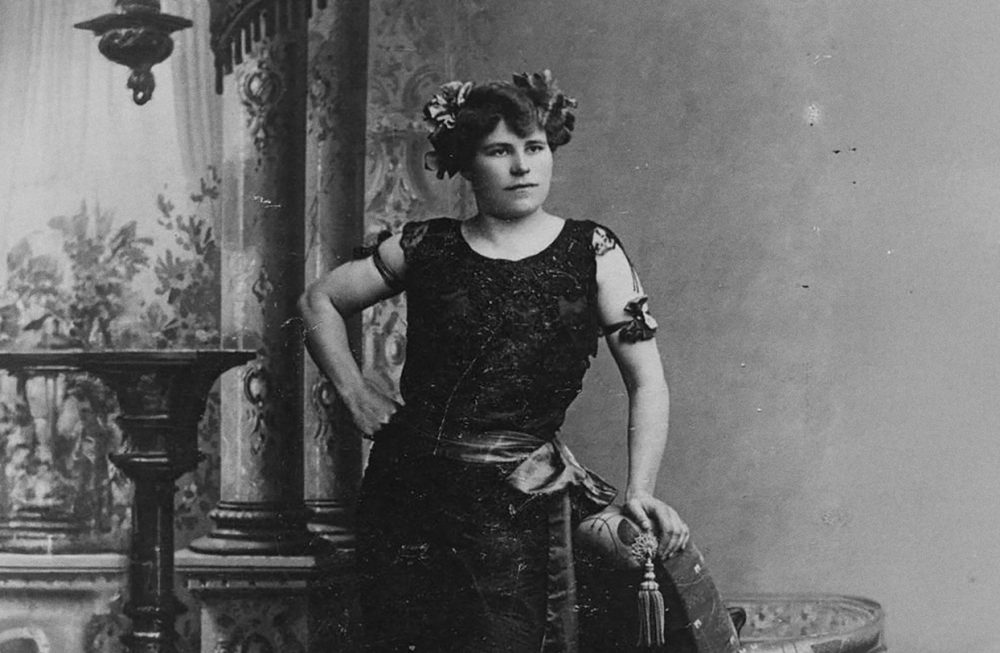
Pictured: Anna Anthonius (Johan Englund, Kerava Museum Services)
Kirjasto
Reading has always paid off
Kirjasto
Reading has always paid off
Finns are known to be great readers and libraries are seen as an essential public service.
However, in late 1700s Finland, reading was still considered suitable only for the nobility. Later, the ideal of education for all people was adopted and the first public libraries were established in the 19th century.
The library service became mainly run by the municipalities, and with the new laws of 1928, public libraries became free of charge.
In the early years of the 20th century, Paasitorni also had a library, which, in addition to providing entertainment, was intended to offer education and cultural capital to the working classes. The Paasitorni library was in active use until the first municipal library opened in Kallio.
The library institution has been elemental for Finland, as its has allowed many people with little formal education to rise to a socially significant position through independent study and reading.

Pictured: The reading room of the Paasitorni library (Finnish Heritage Agency)
Matti Paasivuori
The man who gave this building its name
Matti Paasivuori
The man who gave this building its name
When you come to Paasitorni, you arrive at the address Paasivuorenkatu 5A.
And as you may notice, the street is also named after the same man this room and the entire building is named after.
Matti Paasivuori came to Helsinki in 1887. The young carpenter grew up to be a significant force in the trade union movement and the Social Democratic Party of Finland. He came to be known as a patient man committed to doing everything according to the law.
Paasivuori also served on the board of the Helsinki Workers’ Association, and he was a strong advocate for the construction of Paasitorni at the start of the 1900s.
When the Finnish Parliament resumed its work after a long recess caused by the civil war, only one man was welcomed back from the Social Democrats’ parliamentary group – Matti Paasivuori, who had absolutely refused all violence during the civil war.
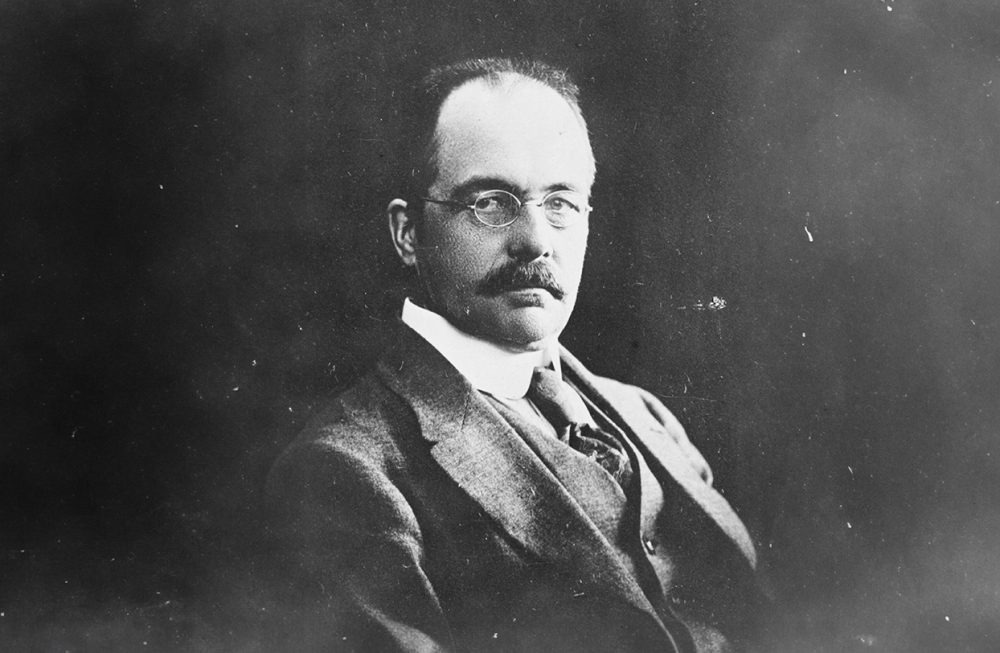
Pictured: Matti Paasivuori in the 1910s (Finnish Heritage Agency)
Merihaka
A pancake that became a city of concrete
Merihaka
A pancake that became a city of concrete
Helsinki has two districts that are best known for their dominant building material: concrete. One is East Pasila; the other is Merihaka.
Originally, where Merihaka now stands, there was a small island called Pannukakku, Pancake. And like the entire surrounding Sörnäinen district, Pannukakku was also
initially harnessed for industrial production. As early as in the 18th century, the island had a pipe factory and then a factory that manufactured horse-drawn carriages.
In 1875, the steam boiler of the workshop on the island at the time exploded in Pannukakku, killing 10 workers.
At the beginning of the 20th century, the island was connected to the mainland, but it was not until the 1970s that the landscape began to change in earnest: An unprecedented cluster of concrete houses rose in the place of the low-lying island.
Merihaka became a symbol of modern concrete construction, and not always only in a positive sense. Today, thanks to its open seascapes, however, Merihaka has come quite a popular place to live.

Pictured: Merihaka in 1977 (Teuvo Kanerva, Finnish Heritage Agency)
Paasiravintola
Free Nelson Mandela!
Paasiravintola
Free Nelson Mandela!
Over the years, Paasitorni has had the privilege of hosting a wealth of interesting guests, some of them true legends.
One of the most memorable events was certainly the visit of Nelson Mandela in 1992.
Nelson Mandela was a South African freedom fighter who spent 30 years of his life in prison. After his release, he eventually became president of his country.
Mandela was admired not only for his extraordinary courage and resilience but also for his remarkable ability to rise above bitterness, choosing reconciliation over revenge against his captors.
A banquet was held in his honour here at Paasiravintola (Restaurant Paasi). According to those present, Mandela’s presence and extreme charisma made the atmosphere of the event uniquely moving.

Pictured: Nelson Mandela (Brendan Bell, Alamy Stock Photo)
Pitkäsilta
When Mannerheim crossed the bridge
Pitkäsilta
When Mannerheim crossed the bridge
For a long time, Pitkäsilta was a bridge that divided Helsinki into two. To the south was the Helsinki of the government buildings, the bourgeoisie and the upper class, and to the north was the city of workers. With this division, crossing the Pitkäsilta Bridge became a symbolic gesture in speeches and stories – an allegory of meeting one another halfway.
The northern side of the Pitkäsilta Bridge was certainly not Marshal C.G.E. Mannerheim’s home turf, and he is not known to have frequented Kallio’s many taverns.
Once, however, he took the symbolic step and crossed the Pitkäsilta Bridge to arrive right here at Paasitorni.
This took place in 1941, and the reason for the visit was the commemoration of the founder of the Scouting Movement, Robert Baden-Powell, held in Paasitorni.
The bridge still divides Helsinki, but with the difference that now its northern side is known as the busiest part of the city. It’s now home to creative jobs, the trendiest bars and restaurants, cultural events, and interesting and authentic street life.
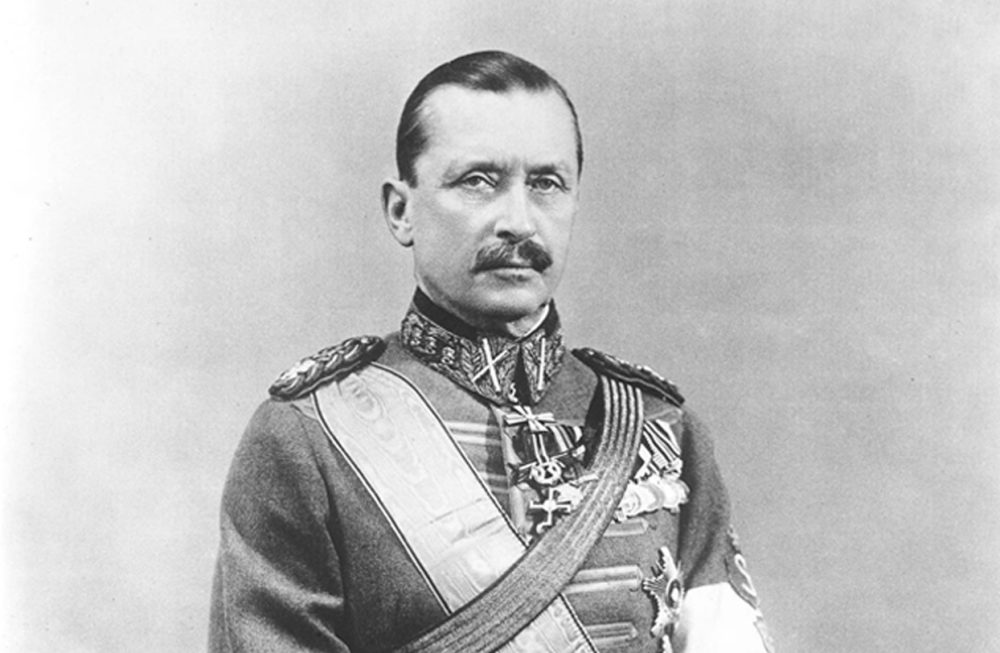
Pictured: Marshal Mannerheim (Military Museum)
Siltasaari Hall
The magic of live pictures and the clack of pool balls
Siltasaari Hall
The magic of live pictures and the clack of pool balls
Before the advent of television, people flocked to cinemas to see moving images. At its peak, Helsinki had as many as 49 cinemas. They were all over the city, and one of the earliest was housed in this very hall.
A cinema called Punalyhty, Red Lantern, operated in Paasitorni in the 1920s, and the cinema’s original wall decorations are still visible on the walls.
The competition for audiences was fierce, so the cinema, which screened silent films, only lasted a year.
After the cinema, this space operated as a pool hall until 1976.
If you close your eyes, you can imagine a black and white romantic scene on the front wall of the hall – or hear the clack of pool balls in your ears.

Pictured: The pool hall in 1925 (Kalle Havas, The Labour Archives)
Sirkus
Polar bears on a slide
Sirkus
Polar bears on a slide
The history of the Paasitorni is full of great entertainment, but the area was bustling with activity even before its time.
Until the early 1900s, a circus was located in the area.
The absolute attraction of the circus were the polar bears.
There were 15 polar bears in total, and the highlight of the event was their thrilling slide down the chute.
The circus was not only a source of fascination but also a spark for resentment. Good citizens were particularly concerned about the alcohol served during performances and the commotion it stirred.
Alongside the polar bears, the circus in Siltasaari featured an eclectic array of performances, including horseback riding, show wrestling, death-defying bicycle stunts, and astonishing feats of strength where strongmen lifted horses – or even small orchestras – into the air.
The memory of the circus remained at the address of Paasitorni, as the street leading here was called Sirkuskatu, Circus Street, until the late 1930s.
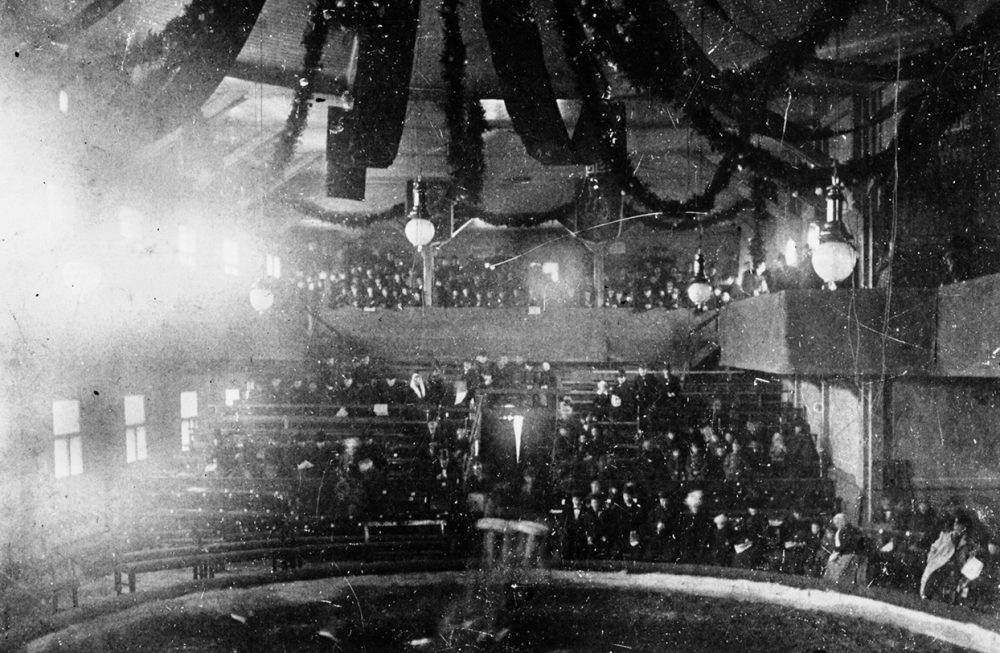
Pictured: Circus Ducander (F.A.V. Hjertzell, Helsinki City Museum)
Tarja Halonen
“Hi, Tarja!”
Tarja Halonen
“Hi, Tarja!”
Everyone who has spent time in the Kallio area of Helsinki in the last eight decades has at one point or another come across Tarja Halonen, Finland’s first female president.
Tarja Halonen has lived in Kallio her whole life – and continues to do so.
It is often nearly impossible for foreign visitors to understand how a president can move so freely among the rest of the people. But to all residents of Kallio, Tarja Halonen is a very common sight.
Halonen has many connections with Paasitorni, but the most recent of them is that after her presidential terms (2000–2012), she has had her office right next door to Paasitorni.
Halonen’s best memories of Paasitorni are probably related to the two occasions on which she arrived here on election night to celebrate herself being elected as President of the Republic of Finland.
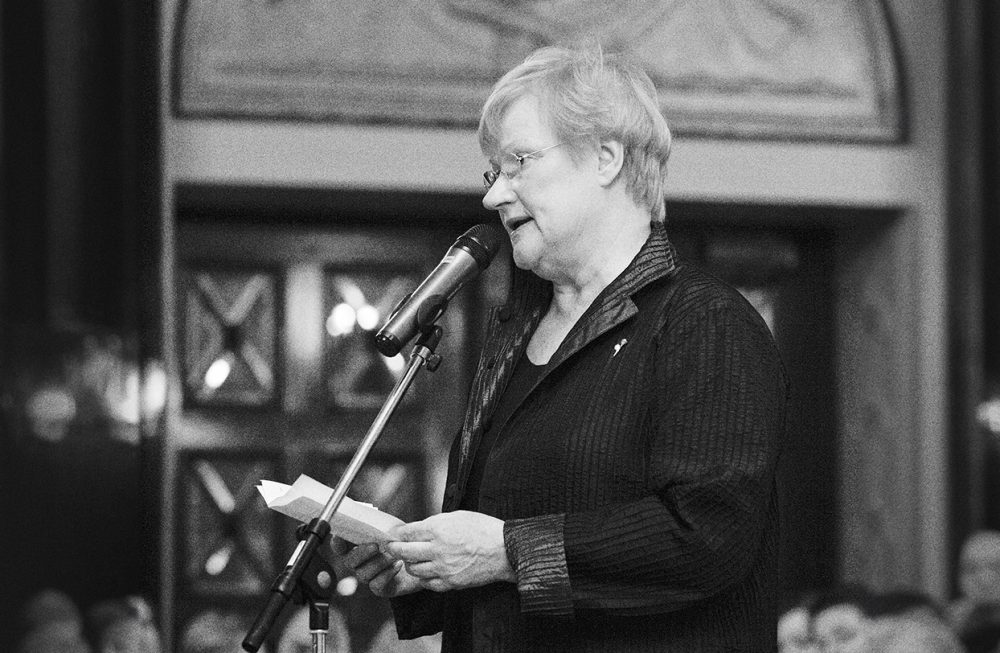
Pictured: Tarja Halonen (Helsinki Workers’ Association)
Tarmo
From the basement to the top
Tarmo
From the basement to the top
In the 1920s, a promising boxer named Gunnar Bärlund trained, like many other young men, in the basement of Paasitorni. However, the young boxer did not get off to a very positive start, as Bärlund was knocked out in his first match at the age of 16.
But after that, Bärlund went from victory to victory. Bärlund won the European heavyweight championship in 1934 and then turned professional.
The highlight of his career was a match at Madison Square Garden in 1938. The opponent was the formidable Buddy Baer. To the amazement of the thousand-strong crowd, Bärlund, then known by his nickname ’GeeBee’, defeated him with a knockout.
After the win, GeeBee was listed as the second contender for the world heavyweight title against Joe Louis. However, the match never took place.
The space takes its name from Tarmo, a sports club that won numerous championship medals in martial arts and strength sports which operated in Paasitorni for a long time.
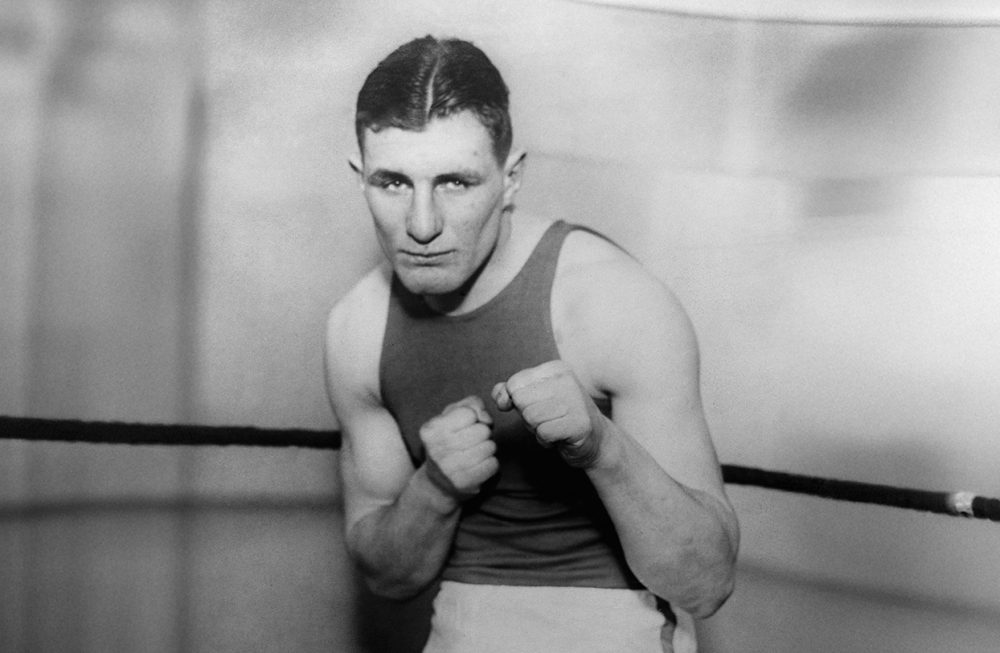
Pictured: Gunnar Bärlund (Finnish Heritage Agency)
Tivoli
Wrestling, entertainment and redemption
Tivoli
Wrestling, entertainment and redemption
The circus, which operated until the early 1900s in Siltasaari, was held in a large manege, originally a factory building, located next to Paasitorni.
In addition to the actual circus performances, the 2000-seat arena hosted many other activities, including horse shows, wrestling and boxing.
The fascination of the performances was guaranteed by the large international touring groups, who brought to distant Finland a taste of the big world.
The Siltasaari manege was also a great place for wrestlers to show their strength. The sport of wrestling, which later became almost a national sport in Finland, got its start from just such wrestling shows – and with good success, as Finland won 38 Olympic medals in wrestling at the 1928 Olympics.
In addition to entertainment, the manege also served as a stage for more serious events, as the first spiritual meeting of the Finnish Salvation Army was held there in 1889.

Pictured: Hubert Cook Sr. on horseback. Circus Street 2-4 (Vasili Aleksandrovitsh Babtshenko, Helsinki City Museum)
Tokoinranta
The man who was sentenced to death twice
Tokoinranta
The man who was sentenced to death twice
Right across the bay opposite Paasitorni is Tokoinranta, which was named after Oskari Tokoi.
Few people have played as many and as conflicting roles in their lives as Oskari Tokoi. In 1917, he held a position similar to the current Prime Minister as the acting Chairman of the Senate. In a matter of only one year, Tokoi had become a revolutionary who had to flee to Russia following the defeat of the Reds in the Civil War.
Tokoi was sentenced to death by the winners of the Civil War. Russia, on the other hand, considered him a traitor and a turncoat and sentenced him to death.
Tokoi fled from Russia to the United States, from where he later organised relief activities for Finland during World War II.
The circle was closed during the Cold War, when Oskari Tokoi was accused of collaborating with the CIA to oppose communism.

Pictured: Oskari Tokoi (Finnish Heritage Agency)
Viktor Julius von Wright
Workers’ association established by a nobleman
Viktor Julius von Wright
Workers’ association established by a nobleman
Few people know that one of the founding members of the Helsinki Workers’ Association, which owns Paasitorni and was established in 1884, was a man who was a noble, a member of the Diet of Finland and an entrepreneur. More people may remember, however, that the early Finnish workers’ movement was called the Wright Workers’ Movement.
This refers to Viktor Julius von Wright, a furniture manufacturer who wanted to improve the conditions of the working class as well as potentially prevent the radicalisation of the working class.
Von Wright had many talents, being one of the forefathers of Finnish design and serving as the chair of the board for the Helsingin käsityö- ja teollisuusyhdistys association for crafts entrepreneurs.
Von Wright had an appreciation of high-quality design, and he would certainly be pleased with the stylish renovated interior of the meeting space bearing his name.
PS. You may also have guessed that Viktor Julius is related to the famous painters Ferdinand, Magnus and Wilhelm von Wright, known for their paintings of birds. They were Viktor Julius’s uncles.

Pictured: Viktor Julius von Wright (Finnish Heritage Agency)
Other spaces and points of interest in Paasitorni
Ticket Booth
Paasitorni – a meeting place
Ticket Booth
Paasitorni – a meeting place
Throughout its history, Paasitorni has served as a venue for many kinds of events. It has been a meeting place where people gather to have fun, engage in hobbies and enjoy all kinds of performances.
They have come here to see movies, organise theatre performances, sing in choirs, engage in boxing matches, enjoy soirées, dance, celebrate and hold conferences.
Tickets to all the building’s events were originally sold at the ticket booth in the building’s upper lobby.
Very early on, Paasitorni became known by the nickname “Bygga” among locals, and when the disco boom reached Paasitorni by the late 1970s, the name was introduced to another generation.
The Juttutupa restaurant on the first floor has also served as a renowned meeting place and event venue.
And Paasitorni remains lively to this day – important events in the 2020s have included the annual Pääsiäispunk festival, Rockabilly Xmas, and the Byggan Retrodisco events organised in the styles of the 1970s and 1980s.

Pictured: Disco in the Congress Hall in the 1980s (The Labour Archives)
Entrance Hall
Why did Paasitorni become a granite palace?
Entrance Hall
Why did Paasitorni become a granite palace?
Originally, Paasitorni was supposed to look completely different. However, the people of the Helsinki Workers’ Association behind the project realised that the granite that needed to be quarried from the site could be used to create a grand stone facade for the building. And so, Paasitorni’s design was changed to its current granite palace form.
Construction of the original section of Paasitorni was completed in 1908. However, the site yielded so much granite that there was enough of it for the extension built in 1925, as well as the embankment for the entire Siltasaari area.
In 2024, some of the stone in Paasitorni’s facade was taken down, cleaned and reattached. At the same time, renovations were carried out on the fittings of the stone slabs, as well as the structures under them. This fully restored the facade to its original appearance.
The stone quarried from the site of the building over a hundred years ago can now decorate Paasitorni’s exterior for at least a hundred years more.

Pictured: This building’s construction site (The Labour Archives)
Staircase
A legendary band’s first gig
Staircase
A legendary band’s first gig
Paasitorni’s Congress Hall has hosted a great number of famous artists, bands and orchestras. But one of the most legendary performances here took place outside the hall.
The greatest Finnish rock band of all time, Hurriganes, was just getting started on their career. The band’s frontman, Remu Aaltonen, thought he had booked the band’s first gig in Paasitorni on New Year’s Eve in 1971.
When the band arrived, they found out that another band (Jussi & the Boys) was already playing in the Congress Hall, and that Remu and his band had no venue.
Remu lost his temper and ordered the band’s equipment to be set up on the staircase leading up to the Congress Hall.
And so, Hurriganes played their first gig on a staircase in Paasitorni.

Pictured: Hurriganes (The Labour Archives)